AI For Business
How to Use AI for Business: 15 Strategies
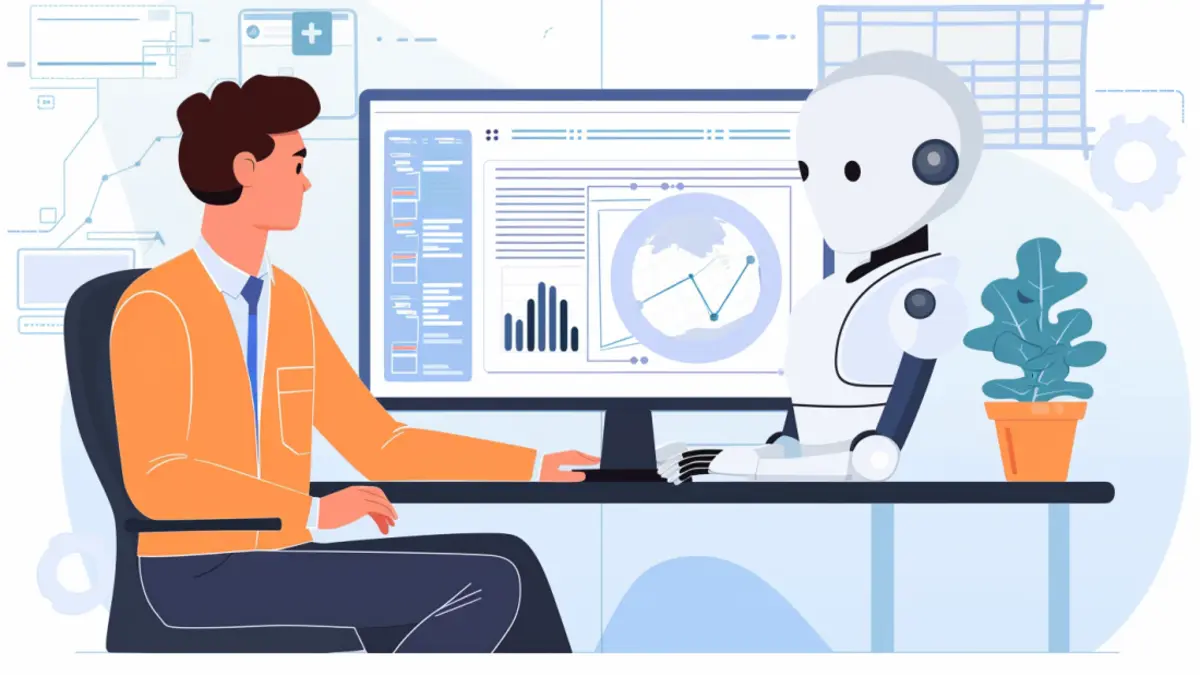
AI technology offers plenty of strategies to enhance efficiency, boost productivity, and deliver exceptional customer experiences. As businesses strive to navigate the age of AI, there are various tools that present unique opportunities for growth and adaptation. These tools can automate tasks, analyze vast amounts of data instantly, and engage with customers and employees in more meaningful ways.
In this article, we will list 15 creative strategies that business owners can employ to harness the power of AI within their business operations. From customer service automation to advanced security measures, these approaches will showcase how integrating AI into various aspects of business can not only streamline processes but also drive significant growth and innovation.
Whether you are a small business owner or head a large corporation, understanding and utilizing these AI-driven strategies will be key to advancing your business objectives and staying ahead in the competitive market. Read to the end to learn all about these strategies.
15 Ways to Use AI for Business Growth
Below, you’ll find 15 strategies you can utilize to grow your business using the wonders of artificial intelligence.
1. Customer Service Automation
AI chatbots can revolutionize customer service by providing round-the-clock assistance without the need for human intervention. These AI systems can handle a vast array of customer queries from order status to troubleshooting, ensuring immediate response times and freeing up human agents to tackle more complex issues.
Over time, AI can also learn from interactions to refine its responses, becoming more efficient and effective. By deploying these systems, businesses can enhance customer satisfaction while reducing operational costs. AI chatbots can be integrated across multiple platforms including websites, social media, and customer relationship management systems, providing a seamless customer service experience.
Examples
- Implementing chatbots on e-commerce platforms to assist with purchases and returns.
- Deploying AI in call centers to provide first-level support.
- Using AI to offer personalized shopping advice on retail websites.
- Integrating AI into mobile apps for on-the-go customer support.
2. Personalized Marketing
AI’s ability to analyze large sets of customer data enables highly personalized marketing strategies. By understanding individual customer behaviors and preferences, AI can tailor marketing messages and product recommendations to each user, increasing the relevance and effectiveness of marketing efforts.
This personalization extends beyond simple product suggestions to include personalized emails, targeted advertising, and content customization, all of which enhance customer engagement and drive sales.
Examples
- Creating personalized email marketing campaigns that address individual user preferences.
- Using AI to dynamically personalize website content for each visitor.
- Deploying targeted advertising based on customer activity and demographic data.
- Developing personalized loyalty programs that offer rewards based on individual shopping behaviors.
3. Demand Forecasting
AI enhances demand forecasting by analyzing historical sales data, market trends, consumer behavior, and external variables such as economic indicators and weather patterns. This allows businesses to predict future product demand more accurately, optimize inventory levels, and plan production schedules effectively.
Accurate demand forecasting helps minimize costs related to overproduction or understocking, ensuring that businesses can meet customer demand without excess expenditure on storage and goods preservation.
- Examples
- Using AI to predict seasonal fluctuations and adjust inventory in retail.
- Employing AI algorithms to forecast demand for new products based on similar items.
- Integrating AI with IoT devices to track usage patterns and predict demand for consumables.
- Applying AI in supply chain management to optimize stock levels across different locations.
4. Fraud Detection

AI systems are excellent at detecting patterns and anomalies that could indicate fraudulent activity. By continuously monitoring transactions for unusual behavior, AI can quickly identify potential fraud and alert the necessary personnel to investigate further. This proactive approach helps prevent significant losses and protects both the company and its customers from the repercussions of fraud.
AI-driven fraud detection systems are particularly effective in high-volume transaction environments like banking, e-commerce, and insurance, where they can instantly analyze thousands of transactions.
Examples of Utilizing Fraud Detection:
- Monitoring credit card transactions to detect unusual spending patterns.
- Analyzing user login behavior to prevent unauthorized access to online accounts.
- Using AI to oversee claims in insurance for signs of fraudulent activity.
- Implementing AI-driven anomaly detection tools in financial monitoring systems.
5. Human Resources Automation
AI dramatically transforms the HR function by automating tasks such as resume screening and candidate ranking, making the recruitment process more efficient and less biased. AI tools can parse vast numbers of applications quickly, identifying the most qualified candidates based on predefined criteria and even suggesting potential good fits based on past successful hires.
Moreover, AI can assist in employee onboarding and training by personalizing learning paths and monitoring progress, ensuring that new hires are effectively integrated into the company.
Examples
- Automating the initial screening of resumes to filter candidates based on specific qualifications.
- Using AI-driven personality and aptitude tests during the recruitment process.
- Implementing AI systems for tracking employee performance and identifying training needs.
- Leveraging AI to analyze job descriptions and suggest improvements based on successful past postings.
6. Price Optimization
AI enhances business profitability through dynamic price optimization. By analyzing market demand, competitor pricing, customer behavior, and inventory levels, AI algorithms dynamically adjust prices in real-time to maximize revenue and ensure competitiveness. This smart pricing strategy is particularly useful in industries like retail, hospitality, and airline, where prices can significantly influence consumer decisions.
AI not only helps in adjusting prices based on demand but also incorporates promotional strategies and discount management, ensuring that price adjustments attract more customers without eroding the brand’s value proposition.
Examples
- Implementing dynamic pricing on e-commerce sites to adjust prices based on user traffic and inventory.
- Using AI to manage hotel room pricing based on occupancy rates and local events.
- Deploying AI in airline revenue management to adjust ticket prices in real-time.
- Applying AI in ride-sharing platforms to dynamically adjust fares based on demand and supply.
7. Maintenance Prediction
Predictive maintenance powered by AI predicts equipment failures before they occur, minimizing downtime and extending machinery life. By analyzing data from machine sensors, AI can detect patterns that precede a breakdown, allowing preemptive maintenance that is both cost-effective and less disruptive than traditional methods.
This proactive approach is crucial for industries reliant on heavy machinery and manufacturing processes, where equipment downtime can lead to significant production losses and increased operational costs.
Examples of Utilizing Maintenance Prediction:
- Using AI to monitor manufacturing equipment for early signs of wear and tear.
- Implementing AI-driven diagnostics in automotive for preemptive repairs.
- AI integration in HVAC systems to predict and schedule maintenance.
- Deploying AI in data centers to anticipate and mitigate system failures.
8. Content Creation
AI tools have revolutionized content creation by automating and enhancing the process of generating textual, visual, and multimedia content. These tools utilize advanced algorithms to produce high-quality, engaging content that can attract and retain audiences. For businesses, this means maintaining a consistent online presence with reduced effort and cost, allowing them to focus on strategy and innovation.
Furthermore, AI-driven content generators can adapt to performance metrics, learning which types of content perform best and tailoring future outputs to maximize engagement. This intelligent adaptation ensures that businesses can continuously improve their content strategies based on observed data.
Examples of Utilizing Content Creation:
- Deploying AI to write regular blog posts on industry-specific topics.
- Using AI-driven tools to create promotional graphics and videos.
- Generating customized reports and presentations with AI.
- Automating social media content production to maintain active engagement.
9. Business Intelligence
AI enhances business intelligence (BI) systems by providing deep, actionable insights through the analysis of large datasets. This allows companies to make informed decisions quickly, based on data-driven insights into customer behavior, operational efficiency, and market trends. AI-powered BI tools help identify patterns and opportunities that may not be apparent through traditional analysis methods.
These tools can also automate the generation of reports and visualizations, making complex data accessible and understandable to stakeholders across the organization. This accessibility supports a data-driven culture, empowering decision-makers at all levels.
Examples of Utilizing Business Intelligence:
- Implementing AI for real-time analytics in e-commerce to understand consumer purchase patterns.
- Using AI to forecast sales and adjust marketing strategies accordingly.
- Deploying AI-driven dashboards that provide executives with insights into operational performance.
- Integrating AI into CRM systems to enhance customer relationship management through better data interpretation.
10. Voice Recognition Services
Voice recognition powered by AI transforms user interfaces by allowing more natural interaction through spoken commands. This technology is particularly beneficial in enhancing accessibility, improving user experience, and streamlining customer service. It enables users to perform tasks hands-free, which is essential in environments where manual interaction is inconvenient or impossible.
AI-powered voice recognition systems are becoming increasingly sophisticated, with the ability to understand and process complex commands and queries. This capability allows businesses to offer innovative services that can differentiate them in competitive markets.
Examples of Utilizing Voice Recognition Services:
- Integrating voice-activated systems in customer service to handle inquiries and support issues.
- Using voice commands for controlling smart office environments.
- Implementing voice-driven navigation in mobile apps for enhanced user accessibility.
- Employing voice recognition for dictation in legal and medical transcription services.
11. Customer Sentiment Analysis
AI-driven sentiment analysis tools evaluate customer feedback, social media comments, and reviews to determine the overall sentiment toward a brand or product. This technology helps businesses understand public perception and promptly address any issues or concerns.
By analyzing sentiments, companies can identify trends and insights that inform product development, marketing strategies, and customer service improvements. These tools can process vast amounts of unstructured text data quickly and accurately, providing real-time insights that are critical for maintaining a positive brand image and customer relationship.
Examples of Utilizing Customer Sentiment Analysis:
- Monitoring brand sentiment across social media platforms.
- Analyzing customer reviews for insights on product improvements.
- Gauging public reaction to marketing campaigns and adjusting strategies based on feedback.
- Understanding customer emotions during service interactions to enhance training and support protocols.
12. Workflow Automation
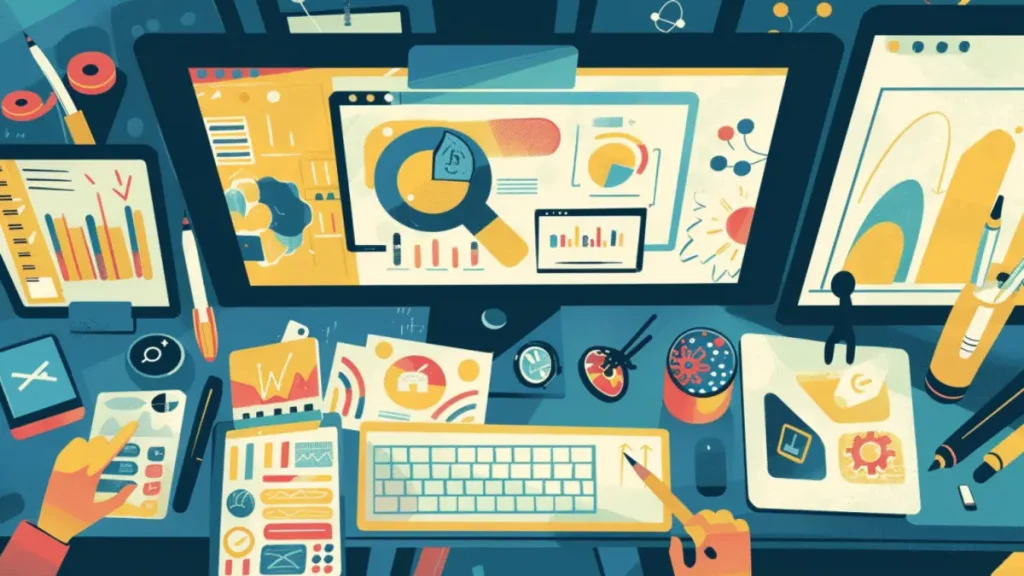
AI excels in automating complex business workflows, significantly improving operational efficiency and accuracy. By automating tasks that are routine, time-consuming, or prone to human error, businesses can allocate resources more effectively and focus on strategic growth initiatives. AI-driven workflow automation tools can handle everything from data entry and invoice processing to complex decision-making processes that involve analyzing large datasets.
The impact of these tools is profound, not only in terms of operational cost savings but also in enhancing the speed and quality of business processes.
Examples of Utilizing Workflow Automation:
- Automating the onboarding process for new hires.
- Streamlining the accounts payable and receivable processes.
- Enhancing customer onboarding procedures in financial services.
- Automating compliance checks and regulatory reporting.
13. Enhanced Security Measures
AI significantly strengthens business security systems by providing advanced threat detection and response capabilities. AI-powered security tools can analyze patterns and predict potential threats before they manifest, allowing businesses to proactively address vulnerabilities. These systems continuously learn from new security threats, adapting to evolving risks without the need for manual updates.
Utilizing these, AI can automate the monitoring of networks and systems, instantly alerting teams to any unusual activity. This real-time surveillance not only secures data and assets but also ensures compliance with industry regulations, which is critical for maintaining trust and operational legitimacy.
Examples of Utilizing Enhanced Security Measures:
- Implementing AI-driven antivirus and malware protection systems.
- Using AI to monitor network traffic and detect anomalies that could indicate a security breach.
- Automating data encryption and access control systems with AI.
- Deploying AI bots to simulate cyber-attacks for system testing and vulnerability assessments.
14. Virtual Personal Assistants
AI-powered virtual personal assistants (VPAs) can handle a range of administrative tasks, from scheduling meetings and managing emails to making travel arrangements and setting reminders. These assistants improve workplace efficiency by reducing the workload on human staff, allowing them to focus on more complex and strategic tasks.
VPAs can be integrated across various platforms, providing seamless assistance that syncs with all of a user’s devices. This integration helps maintain consistency and accuracy in schedule management and task delegation, making these AI assistants indispensable for busy professionals.
Examples of Utilizing Virtual Personal Assistants:
- Deploying VPAs to schedule meetings and manage calendars.
- Using AI assistants for handling customer inquiries via email.
- Integrating AI with CRM systems to automatically update client information.
- Employing AI assistants for project management support, tracking deadlines and deliverables.
15. Smart Energy Management
AI in smart energy management optimizes the use of energy within businesses, reducing costs and enhancing sustainability. These systems can predict peak load times and adjust energy consumption accordingly, utilizing data from sensors and historical usage patterns. AI can also integrate renewable energy sources into the power grid more efficiently, managing fluctuations in supply and demand.
Smart energy management not only cuts operational costs but also supports corporate responsibility initiatives by reducing environmental impact. These systems provide detailed insights into energy usage, allowing businesses to make informed decisions about consumption and sustainability practices.
Examples of Utilizing Smart Energy Management:
- Using AI to optimize HVAC systems for energy efficiency.
- Implementing AI-driven lighting systems that adjust based on occupancy and natural light.
- Employing AI for real-time energy consumption monitoring and management.
- Integrating AI with renewable energy sources to maximize efficiency and cost-effectiveness.
Using AI for Your Business
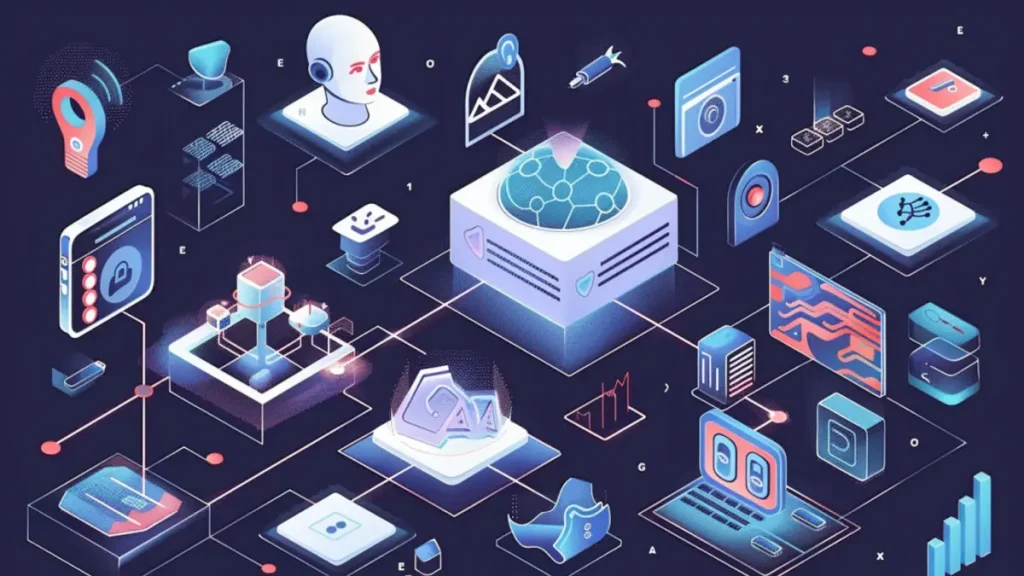
Throughout our article listing AI strategies for business, we’ve covered a wide array of strategies that harness this powerful technology. AI not only streamlines customer service through automated chatbots but also personalizes marketing efforts, optimizes pricing, and forecasts demand to ensure businesses remain competitive and responsive to market dynamics.
By implementing AI-driven tools for various aspects of your business, you can automate countless tasks and have more time to focus on growing your business. With numerous strategies to use AI for business covered in this article, you’ll find many that appeal and help grow your business.
AI For Business
15 Jobs AI Can’t Replace
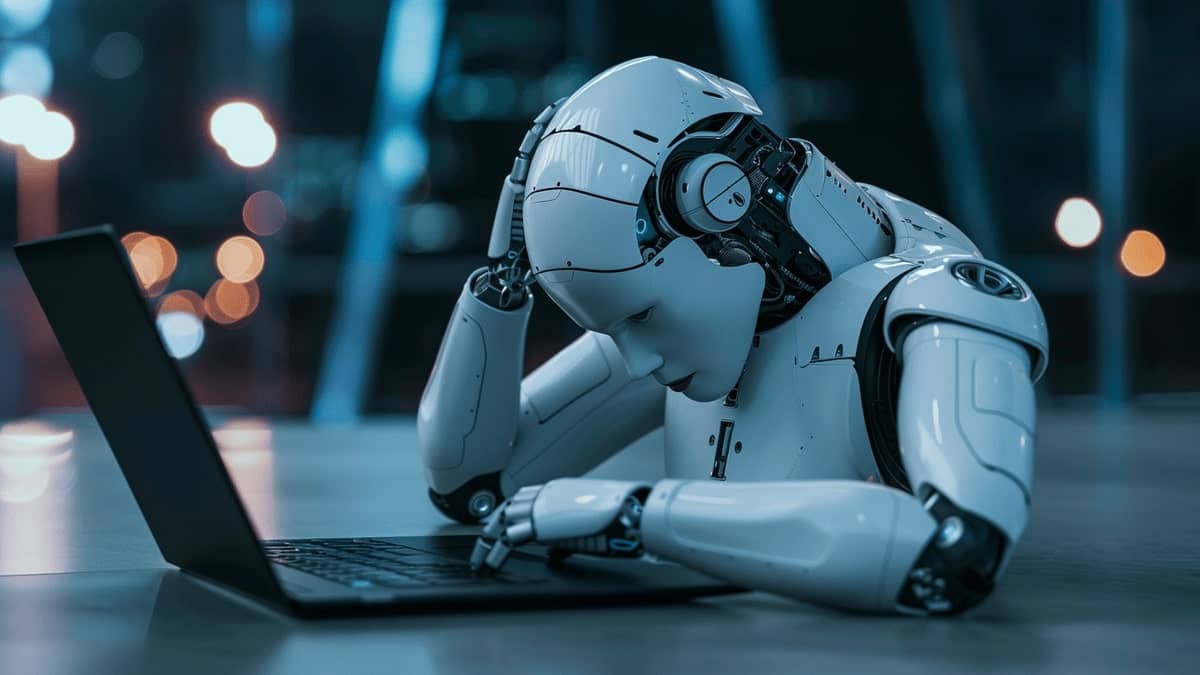
As artificial intelligence (AI) continues to evolve, concerns about its impact on employment are growing. Many wonder which jobs are at risk of automation and which remain secure.
While AI and robots are reshaping many industries, there are still numerous roles that rely heavily on human abilities that AI simply can’t replicate.
This article will explore ten jobs safe from AI, highlighting the uniquely human skills that keep these roles secure. Read on to discover why these jobs are likely to remain in human hands for the foreseeable future.
Jobs AI Will Not Replace Any Time Soon
Here is our list of jobs safe from AI – that it won’t be able to replace any time soon. For each profession, we’ll also cover why they are irreplaceable by AI.
Creative Writer
Creativity is a distinctly human trait, and jobs that require original thought, emotion, and personal expression are jobs AI can’t replace. Creative writers, such as novelists, poets, and playwrights, craft stories that evoke emotions and connect with readers on a deeply personal level.
AI may assist with data-driven suggestions or editing, but the heart and soul of narrative creation come from human experiences and imaginative minds that AI simply cannot duplicate.
Psychiatrist
The field of psychiatry is deeply rooted in human connection and emotional understanding. Psychiatrists diagnose and treat mental health disorders through conversations, observation, and empathy, which are inherently human skills.
Although AI can offer support tools, such as diagnostic aids or treatment monitoring, it lacks the capacity to understand complex human emotions and provide the compassionate care coming from real human interaction.
Event Planner
Event planning requires creativity, negotiation skills, and a personal touch that AI tools like ChatGPT can’t fully replicate. From weddings to corporate gatherings, event planners must understand client desires, manage unforeseen changes, and create a memorable experience.
This job demands a level of adaptability and problem – none of which are traits that AI can’t handle, especially when it comes to negotiating with vendors and personalizing details to meet specific client needs.
Elementary School Teacher
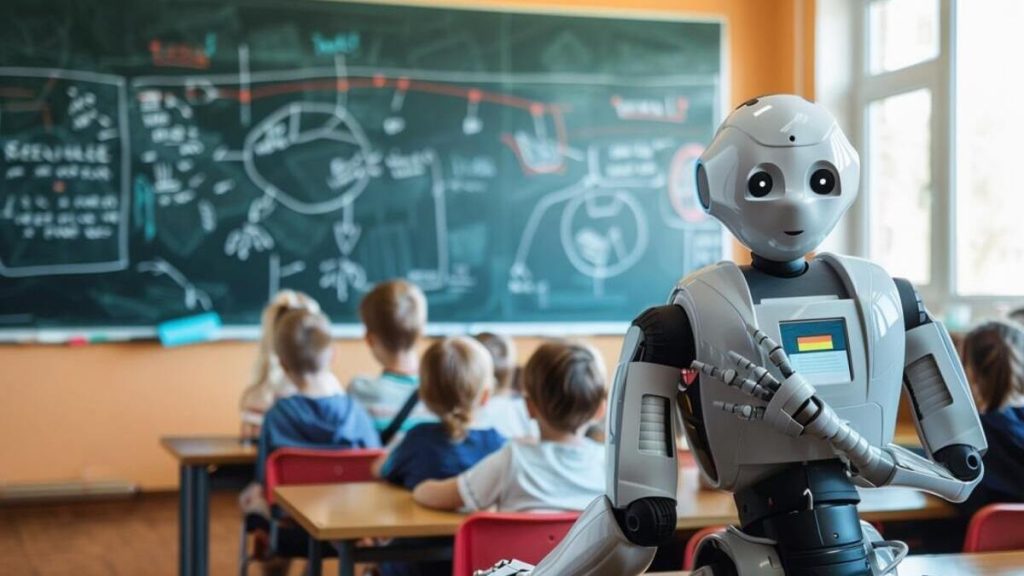
Teaching young children involves more than just delivering content; it requires emotional intelligence, adaptability, and a nurturing spirit. These qualities are critical in fostering a learning environment.
Elementary school teachers support the social and emotional development of children, roles that demand human empathy. The nuanced interactions and personalized attention help young learners thrive, making this profession secure from AI replacement.
Social Worker
Social work is a profession built on trust and personal connection, focusing on helping individuals overcome some of life’s most challenging moments. Social workers provide support, guidance, and resources that require a deep understanding of human behavior, cultural contexts, and emotional intelligence.
The ability to navigate complex social situations and make judgment calls based on human interactions are aspects of the job that AI cannot replicate.
Chef
The culinary arts are a celebration of culture and creativity, making the role of a chef secure from AI replacement. While machines can follow recipes, they lack the intuition and sensory judgments required to tweak a dish to perfection.
Chefs experiment with flavors, textures, and ingredients to create meals that delight and surprise diners. Their personal touch and understanding of the dining experience are inherently human elements. Unless the AI can grow a pair of hands and taste buds, chefs won’t be replaced by AI anytime soon.
Hairdresser
Hairdressing goes beyond simply cutting hair; it involves a personal touch, understanding client preferences, and artistic flair. Jobs of all this kind are safe from ChatGPT and others. Hairdressers build relationships with their clients, offering advice tailored to their styles and needs.
The physical and social aspects of hairdressing, along with the ability to handle diverse hair types and react in real-time to customer feedback, are qualities that AI also can’t mimic.
Athletic Coach
Coaching is another field where human interaction is crucial. Athletic coaches do more than teach sports skills; they motivate, strategize, and adapt their approaches to each athlete’s specific needs and psychological state.
They make split-second decisions during games and provide emotional support to players. These roles require a depth of human understanding and adaptability that is currently beyond the reach of AI. However, AI can still have its uses for coaches and athletes to improve performance.
Judge
The role of a judge involves not just understanding and applying the law but also interpreting it with a sense of fairness and justice, considering the broader human context of each case. Since AI cannot have a sense of fairness and justice other than the data it was fed to perceive, it cannot replace judges.
This job requires a deep understanding of societal norms, ethics, and human behavior — nuances that AI cannot fully grasp. The complexities of human emotions and legal reasoning ensure that judges are undoubtedly safe from AI.
Hospice Nurse
Hospice care is profoundly personal and emotional. Hospice nurses provide comfort, empathy, and support to patients and their families during some of the most difficult times. This role requires compassion, sensitivity, and a human touch that AI cannot replicate.
The emotional intelligence needed to navigate the complexities of end-of-life care makes this profession secure from being replaced by robots.
Ethics Consultant
Ethics consultants play a crucial role in navigating complex moral decisions in fields like business, healthcare, and technology. This role demands a nuanced understanding of ethical principles, human values, and societal impacts.
AI lacks profound moral reasoning and the ability to contextualize ethical dilemmas within a broader human experience, making the nuanced judgments of ethics consultants safe from AI.
Adventure Guide
Adventure guides bring personal experience, adaptability, and a passion for nature to their work, leading clients through potentially hazardous environments. This job requires not only deep knowledge of the terrain but also the ability to assess clients’ physical and emotional states, adapt plans on the fly, and ensure safety.
The interpersonal skills, leadership qualities, and intuitive understanding of natural environments highlight the human-centric nature of this role, keeping it safe from AI and automation. The same can be said for tourist guides, but the use of AI in this field profoundly helps travelers navigate their travel destinations.
Construction Worker
Construction work is highly physical and requires on-site problem-solving skills that AI and robots cannot easily duplicate. While some aspects of construction might be automated, the job’s core, such as interpreting complex environments and making skilled judgments in unpredictable conditions, relies heavily on human expertise.
Construction workers also need to adapt quickly to safety concerns and changes in project specifications, demands that require a human presence and intuition.
Personal Trainer
Personal trainers tailor fitness programs to the individual health needs and fitness goals of their clients, making this a highly personalized profession. They motivate clients, adjust their techniques based on personal interaction, and provide support and encouragement.
The ability to adapt fitness plans in real-time, based on the client’s physical responses and emotional state, is a skill that AI cannot duplicate. However, AI can still guide people to what exercises will benefit their health for specific circumstances. Still, the hands-on, empathetic approach ensures personal trainers remain crucial in a field where personalized human interaction is key.
Gourmet Food Critic
Food critics bring a depth of culinary knowledge and a discerning palate to their evaluations of food and dining experiences. This role goes beyond simply tasting dishes; it involves analyzing the complexity of flavors, the quality of ingredients, the chef’s creativity, and the overall dining atmosphere.
Food critics write reviews that influence public opinion and culinary trends. Their ability to convey sensory experiences and emotional responses to food through writing is uniquely human, ensuring their role remains deeply in culinary arts.
Human Element in Jobs Safe From AI and Robots

The jobs discussed in this article, from creative writers to food critics, share essential characteristics that AI and robots cannot replicate. These professions require a deep level of human interaction, emotional intelligence, ethical judgment, creativity, and personal touch. These qualities are uniquely human and irreplaceable by technology.
Whether it’s the empathy needed in counseling, the creative judgment in art curation, or the personal rapport in event planning, these roles highlight the importance of human skills beyond the capabilities of current AI technologies.
AI For Business
AI in Agriculture: How Artificial Intelligence Helps Farmers

In today’s tech-driven world, Artificial Intelligence (AI) is not just a buzzword but a powerful tool reshaping industries, including agriculture. From enhancing crop yields to managing livestock and conserving resources, AI’s impact in agriculture is profound, offering promising improvements in sustainability and productivity.
For those curious about how technology is influencing farming, this article will shine a light on the multifaceted applications of AI in agriculture. Read on to learn how AI is not only optimizing traditional farming practices but also introducing new efficiencies and solutions that were once unimaginable.
Autonomous Tractors and Robots
Autonomous tractors and robots represent a major innovation in agricultural machinery, leveraging AI to perform various farming tasks without human intervention. These machines are programmed to handle jobs like seeding, fertilizing, and harvesting with high precision and efficiency. This technology allows for operations to continue around the clock, optimizing plant growth cycles and increasing overall productivity.
Autonomous tractors and robots also reduce the physical strain on farmers and minimizes the need for manual labor, enabling farmers to concentrate on strategic decisions and farm management. By improving the accuracy and timing of agricultural tasks, autonomous machines play a crucial role in enhancing crop yields and reducing waste.
Crop Monitoring and Health Assessment
AI-enhanced crop monitoring utilizes drones and satellite imagery to provide detailed insights into crop health across vast areas. These tools use sophisticated AI algorithms to analyze images, detecting signs of stress, disease, or pest infestations early on. Prompt detection allows farmers to respond quickly, applying targeted treatments that can save crops and reduce chemical usage.
Moreover, continuous monitoring helps in tracking the effects of any interventions, ensuring that corrective measures are effective. This proactive approach not only helps in maintaining high crop quality but also supports sustainable farming practices by optimizing resource use and minimizing environmental impact.
Genetic Engineering
Genetic engineering in agriculture has been transformed by AI, which helps analyze complex genetic data more efficiently than traditional methods. AI tools assist scientists in identifying specific genetic traits linked to disease resistance, yield potential, and climate adaptability. This data is crucial for developing new plant varieties that are more resilient to environmental challenges and capable of producing higher yields.
Furthermore, AI accelerates the breeding process, enabling faster rollout of improved crop varieties to the market. This not only boosts food production to meet global demand but also enhances the nutritional quality of the crops, making farming more sustainable and economically viable in the long run.
Irrigation Management
AI significantly enhances irrigation management by utilizing data from sensors that monitor soil moisture and weather conditions. This technology helps in precisely determining when and how much water crops need. By automating irrigation systems, AI ensures that water is distributed efficiently, reducing waste and helping conserve this vital resource.
Additionally, optimal watering improves crop health and yield, as plants receive the exact amount of water they require at the right time. This is especially important in regions with water scarcity, where maximizing the use of available water is crucial for sustainable farming practices.
Livestock Management
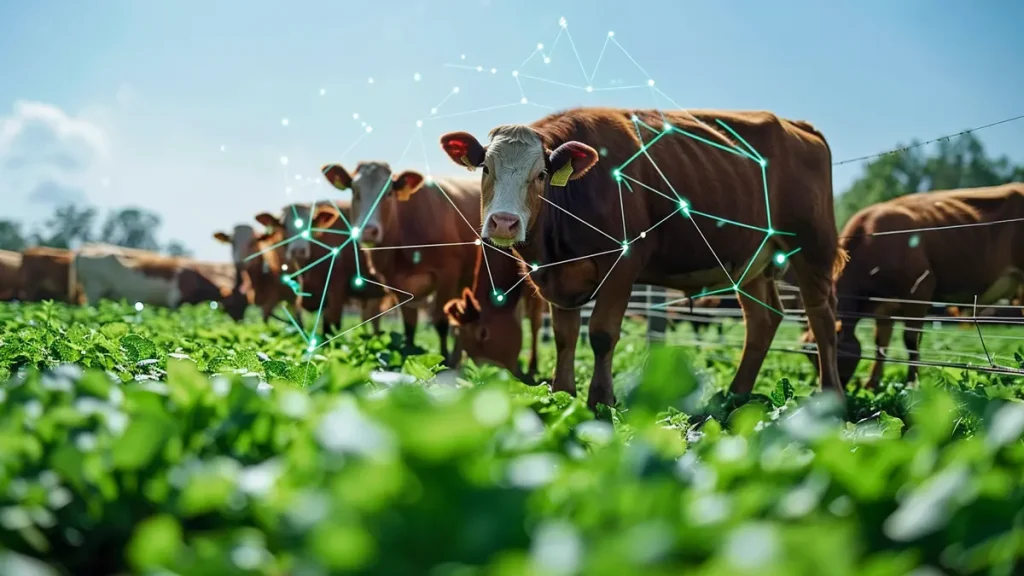
In livestock management, AI technologies are used to monitor the health and well-being of animals. Sensors can track vital signs and behaviors, alerting farmers to any signs of illness or distress in their animals early on.
This enables prompt medical treatment, improving animal health and reducing mortality rates. Additionally, AI can analyze patterns in livestock behavior to optimize feeding, breeding, and housing conditions, which enhances overall farm efficiency and productivity. By ensuring healthier livestock, AI contributes to higher quality meat and dairy products while also promoting humane animal treatment.
Pest Control
AI in pest control involves the analysis of data from various sources, such as weather stations, soil sensors, and crop images, to predict pest outbreaks. AI models can identify the conditions that favor the development of pests and suggest the optimal timing for preventive measures.
This proactive approach helps farmers reduce the use of pesticides, targeting only the affected areas and thereby minimizing environmental impact. Additionally, AI-driven pest control supports the maintenance of crop health and yield by ensuring pests are managed efficiently and with minimal chemical intervention, leading to safer, more sustainable agricultural practices.
Precision Farming
Precision farming is one of the most significant applications of AI in agriculture. It involves using data analytics to make farming more accurate and controlled. AI processes information from soil sensors, weather data, and machines to guide farming decisions like planting depth, spacing, and resource allocation.
This tailored approach helps maximize land and resource use, resulting in higher crop yields and lower costs. Moreover, precision farming reduces environmental impact by ensuring that fertilizers and pesticides are applied sparingly and only where needed, preserving the surrounding ecosystem.
Supply Chain Optimization
AI aids in optimizing the agricultural supply chain by predicting the best times for planting and harvesting, thus ensuring that crops reach the market at peak freshness. AI algorithms analyze market trends, weather patterns, and crop statuses to streamline logistics and distribution processes.
This not only helps in reducing spoilage and loss but also improves profitability by matching supply with demand more effectively. In addition, AI-driven supply chain management supports sustainability by minimizing transportation distances and associated carbon footprints, making the entire farm-to-table process more efficient.
Weed Detection
AI-driven weed detection systems utilize high-resolution cameras and machine learning algorithms to scan fields and differentiate between crops and weeds. This precise identification allows for targeted herbicide application, which not only conserves chemicals but also protects crops from potential damage. By applying herbicides only where needed, farmers can significantly reduce the amount of chemicals used, lowering costs and lessening environmental impact.
Moreover, effective weed management facilitated by AI ensures that crops face less competition for nutrients, water, and sunlight, enhancing overall crop health and yield. This approach not only improves the efficiency of farming operations but also contributes to more sustainable agricultural practices.
Yield Prediction
Yield prediction using AI involves sophisticated algorithms that assess numerous variables including weather conditions, soil quality, crop health, and historical yield data. By accurately predicting how much crop a farm will produce, farmers can make better decisions about resource allocation, marketing, and pricing strategies.
This foresight helps stabilize supply chains and food markets, reducing the risk of overproduction or shortages. Furthermore, accurate yield predictions enable farmers to optimize their operations and investments, leading to more profitable and sustainable farming practices.
AI Helping Farmers for a Better Future

Artificial Intelligence is proving to be a game-changer in the field of agriculture, offering significant benefits that can lead to a more sustainable and efficient future.
By integrating AI across various aspects of farming, from precision agriculture to livestock management, farmers are able to enhance productivity, reduce waste, and minimize environmental impact. AI-driven technologies help in making informed decisions, optimizing resource use, and improving crop and livestock management practices. This not only makes farming more sustainable but also eases the workload for farmers, allowing them to achieve better results with less effort.
As artificial intelligence becomes better and more widespread in our lives, the potential for AI to revolutionize agriculture and support global food security becomes increasingly clear.
AI For Business
5 Evergreen Business Skills in the Age of AI

In an era dominated by rapid technological advancement, discussions about artificial intelligence (AI) often skew towards a dystopian view of job displacement. The fear that AI will render human workers obsolete is a common theme that resonates across sectors. While it’s true that AI and automation pose a real threat to certain jobs, particularly those involving repetitive tasks, this narrative overlooks a crucial aspect—the significant potential AI holds for enhancing the capabilities of the workforce.
Rather than simply replacing jobs, AI can augment the roles of skilled workers, fostering a new era of productivity and innovation. For those willing to adapt and upskill, AI opens up a landscape rich with possibilities for innovation and efficiency. The real challenge and opportunity lie in leveraging AI as a partner in progress. By focusing on developing certain evergreen business skills, professionals can ensure they not only remain relevant but thrive in this new AI-enhanced workplace.
These skills, which include critical thinking, emotional intelligence, adaptability, creativity, and ethical judgment, are fundamentally human attributes that AI cannot replicate. They represent the enduring strengths of human professionals in a digital age, empowering them to use AI not as a replacement but as an invaluable ally. In the following sections, we will explore these skills in detail, underscoring their significance as the bedrock upon which professionals can build a resilient and dynamic career in an AI-driven future.
1. Critical Thinking and Decision-Making
AI excels in handling data and generating insights, but the human ability to interpret these findings within a broader context remains crucial. Critical thinking involves questioning assumptions, analyzing possible outcomes, and making informed decisions that AI cannot fully replicate. Professionals need to integrate AI outputs with real-world business dynamics to drive strategic decisions effectively.
2. Emotional Intelligence (EI)
As AI takes over more routine tasks, interpersonal skills become more crucial. Emotional intelligence—the ability to be aware of, control, and express one’s emotions, and handle interpersonal relationships judiciously and empathetically—is indispensable. AI can analyze data, but it cannot replicate the human touch needed in leadership, team management, and customer relations.
3. Adaptability and Learning Agility
The rapid evolution of AI technologies requires professionals to be adaptable and continually learning. The willingness to acquire new skills and adapt to changing tools and environments is essential. This agility helps professionals use AI effectively and ensures they remain indispensable as facilitators and integrators of technology.
4. Creative and Innovative Thinking
Creativity is not just about art; it’s a business tool that drives innovation. AI can support and enhance creative processes by providing data-driven insights and automating routine parts of the creative process. However, the initial spark and ability to think outside the box come from human ingenuity. Professionals who can innovate and think creatively will find new ways to use AI, opening up opportunities for business growth and differentiation.
5. Ethical Judgment and Integrity
As AI becomes more prevalent, ethical considerations become more complex. Professionals must navigate issues like data privacy, AI bias, and ethical implications of AI decisions. Strong ethical judgment and integrity are critical as these are not programmable traits. Businesses rely on professionals to set the right course in uncharted AI territories.
These skills are foundational to thriving in an AI-enhanced workplace. They complement technological advancements and are critical for professionals who aim to leverage AI effectively without losing sight of the human aspects that drive business success.
-

 AI Guides2 years ago
AI Guides2 years agoGPT-4 vs. GPT-4o: Key Differences
-
Uncategorized3 months ago
10 Best AI Productivity Tools for 2025 [Tested]
-
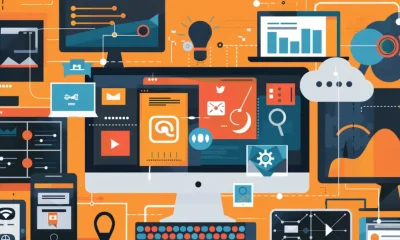
 AI Tool Reviews2 years ago
AI Tool Reviews2 years ago10 Best Free AI Websites
-

 AI for Investment2 years ago
AI for Investment2 years agoHow to Use AI for Stock Trading
-

 AI for Entertainment2 years ago
AI for Entertainment2 years agoAI Predicts for Super Bowl Winners 2024 to 2099 – Surprising Results
-
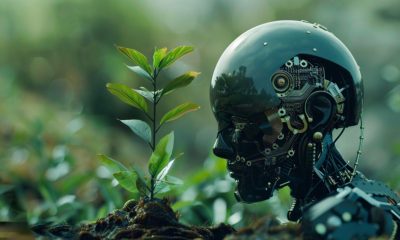
 AI Guides2 years ago
AI Guides2 years agoHistory of AI – From the 1950s to Present
-

 AI Guides2 years ago
AI Guides2 years agoCurrent Limitations of Artificial Intelligence
-

 AI Tool Reviews2 years ago
AI Tool Reviews2 years ago10 Best AI Song Generators (Including Free Options)


